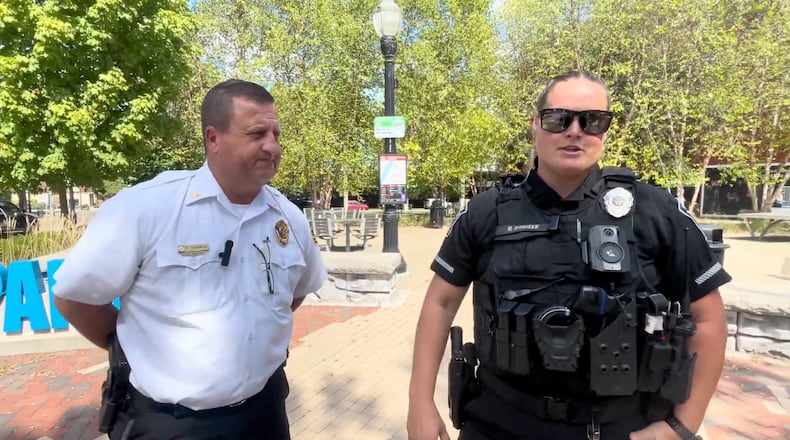Hamilton Police Chief Trent Chenoweth and his executive team have developed a program based on its downtown walking beat, where one officer is assigned to just the downtown area and works exclusively with one detective.
This neighborhood policing program is a response to the department losing institutional knowledge.
“It also creates a team environment that, in my opinion, will allow us to be more responsive to the issues going on in a community,” the chief said. “We are a younger agency, there’s no denying that.”
The department has 111 uniformed officers, seven under its authorized strength. Every shift has 18 officers, so this neighborhood policing program will assign one of those officers to one of eight designated beats, with the balance floating around the city as needed.
“If I have a new officer coming on, they can still rotate around and work different beats, so that way we get that knowledge of learning the city,” Chenoweth said. “Everybody’s gaining from this, everybody’s benefiting from this. I just see it as a huge way for us to connect to the community.”
With three shifts, each neighborhood beat now has a team of three officers, and each team will be linked up with a detective who helps on cases. That detective would also serve as a team captain or, in some scenarios, a mentor.
Several months ago, the police department developed the downtown walking beat. Officer Haleigh Daniels patrols the downtown and urban core, and Detective Frank Botts is assigned to it.
“Everybody's gaining from this, everybody's benefiting from this. I just see it as a huge way for us to connect to the community."
“So you have this initial program, which is working extremely well, and now, we take that same focus and we push it into the neighborhoods. Instead of a randomly assigned officer going to a community meeting, it’s the same three officers who work there day in and day out,” Chenoweth said.
It’s not unlike seeing the same cashier or barista at your favorite establishment.
“It’s just a chance for us to connect more in a personal way, in a one-on-one way, and have greater accountability,” the chief said. “If there’s something going on, the residents know who to call, the community leaders know who to call. It just creates a team environment that, in my opinion, will allow us to be more responsive to the issues going on in a community.”
About the Author


